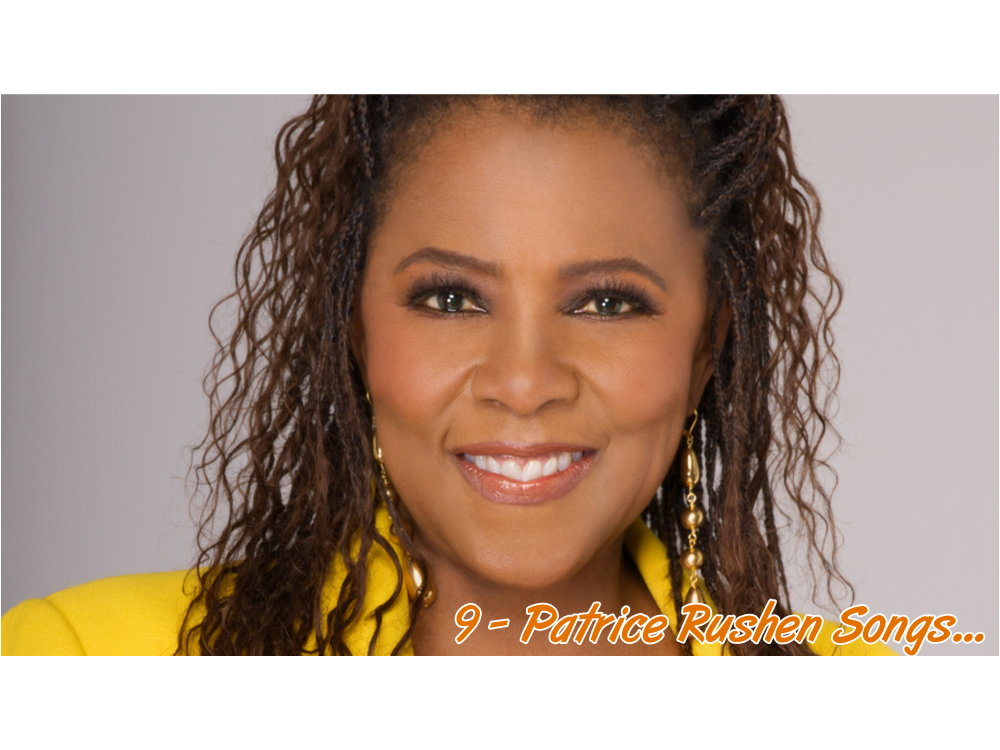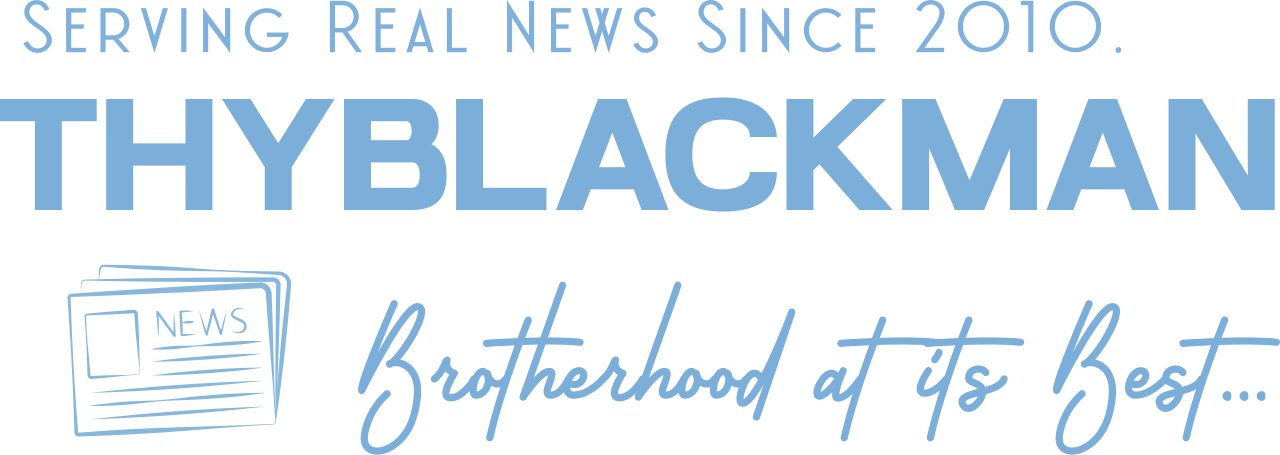(ThyBlackMan.com) Patrice Rushen isn’t just a footnote in R&B history—she’s a full chapter. A classically trained pianist who effortlessly blended jazz, funk, soul, and pop, her music goes far beyond her most famous hit, “Forget Me Nots.” With intricate arrangements, warm vocals, and emotional intelligence that cuts through decades, Rushen created tracks that still feel fresh in today’s musical landscape.
From slow-burning love ballads to dancefloor grooves packed with emotional nuance, Rushen’s catalog is a treasure trove waiting to be rediscovered. Whether you’re a crate-digger, a Spotify explorer, or just someone who appreciates real musicianship, these nine songs offer a deep dive into an artist who always stayed true to her sound—sophisticated, soulful, and ahead of her time.

1. “Forget Me Nots”
“Forget Me Nots” isn’t just Patrice Rushen’s biggest hit—it’s a cultural landmark. The iconic bassline has achieved near-mythical status in music circles, sampled famously by Will Smith in “Men in Black” and George Michael in “Fastlove.” But despite its popularity, the song still manages to feel intimate, emotionally charged, and compositionally rich.
Freddie Washington’s bass anchors the track with a fluidity that’s almost melodic on its own. Yet, the real magic is how Rushen builds everything around it. Her use of layered synthesizers, subtle horn stabs, and perfectly placed background vocals makes “Forget Me Nots” as much a producer’s masterclass as it is a singer’s showcase. It grooves like funk, it moves like pop, and it breathes like jazz.
Lyrically, it’s both poignant and empowering. Patrice isn’t begging for a lover to stay—she’s simply asking to be remembered. “Sending you forget me nots / To help you to remember” is a line that hits differently in a world obsessed with closure. She’s asking for dignity in departure, and that quiet confidence is what sets the song apart from its peers.
Even now, “Forget Me Nots” plays effortlessly in club settings, radio rotations, and curated nostalgic playlists. The track bridges generations. It reminds new listeners that groove never goes out of style and that sincerity wrapped in melody will always find its audience. It’s not just Patrice’s signature song—it’s a timeless reminder that real musicianship leaves a permanent mark.
2. “Remind Me”
In the world of R&B slow jams and quiet storm classics, “Remind Me” is the kind of track that seeps into your skin. From the moment the chords drop, there’s a warmth—both analog and emotional—that envelops you. It’s sensual without being overt, nostalgic without sounding dated, and modern in ways few early ’80s songs can claim.
The arrangement here is deceptively simple. You have the Rhodes keyboard floating like mist, a clean bassline that knows exactly when to speak up, and a rhythm section that gives just enough motion to keep things from becoming static. But the true genius lies in Rushen’s restraint—vocally and instrumentally. She doesn’t oversing. She lets the lyrics do the talking and the instruments do the feeling.
Sampling culture has breathed new life into this track. Hip-hop producers from the ‘90s to the present day have mined it for gold—most notably in songs by Faith Evans and The Notorious B.I.G. That’s a testament to its emotional core and melodic clarity. The groove lends itself to reinvention, but the original still reigns supreme in its subtlety.
What’s most striking in 2025 is how “Remind Me” aligns with today’s obsession with mood music—think lo-fi, neo-soul, or alt-R&B. Artists like Snoh Aalegra or Giveon could easily cover this track and make it a hit all over again. But Rushen already perfected it decades ago. It’s a quietly commanding love song that doesn’t beg for attention—it earns it.
3. “Haven’t You Heard”
“Haven’t You Heard” is the type of song that announces its presence within seconds. The groove is instantly infectious—bouncy, textured, and full of life. Patrice’s voice enters the mix like a beam of sunlight, playful and unguarded, drawing you into a euphoric confession of love. This track represents the joyful pinnacle of disco-funk, infused with her jazz background and signature polish.
The real trick of this song is how much is going on without sounding overstuffed. Strings swoop in and out like waves. The bassline pops and dips. The background vocals—almost gospel in their energy—wrap the chorus in bright harmonies. It’s a production marvel. The track moves like a well-oiled machine, yet there’s nothing mechanical about it. Every note radiates human touch and feeling.
Patrice’s lyrical delivery is giddy and unapologetic. “Have you heard that there’s an ad / Listed in the classifieds / Kind of brief, it only says / “I’m lookin’ for the perfect guy” / Don’t you know that” she sings, and you believe every syllable. There’s a charming innocence here, a refreshingly un-ironic take on romance that makes the song timeless. It’s the sonic equivalent of a crush you can’t hide, and don’t want to.
Today, “Haven’t You Heard” is an underground favorite among DJs, playlist curators, and retro-soul fans. Its upbeat tempo fits everything from weddings to rooftop parties. It’s also a great reminder that before the word “vibe” became a genre description, Patrice Rushen was already building worlds with hers.
4. “You Remind Me”
“You Remind Me” is one of Rushen’s most underrated songs—a moody, introspective gem that explores memory, loss, and emotional triggers through a glossy, synth-pop lens. It was a stylistic shift for Rushen in 1984, leaning into the new wave and electronic textures that were reshaping R&B. But she never sacrifices warmth for trendiness. Even within the futuristic sounds, her humanity shines through.
From a production standpoint, the song is a beautiful blend of old and new. The drum machines and synth patches give it that unmistakable ’80s sheen, yet the chord progressions are deeply jazzy. The way she fuses these worlds reflects her classical and jazz training meeting head-on with the era’s technological leap. The result is a haunting, shimmering soundscape that still feels ahead of its time.
Vocally, Patrice gives one of her more introspective performances. She sings with the air of someone lost in thought—not broken, but definitely haunted by the emotional echoes of someone who once meant everything. It’s subtle storytelling at its finest. She isn’t laying blame or asking questions—she’s simply stating the truth of how people, places, and feelings linger.
In today’s sonic climate—where artists like Solange, Cleo Sol, and Jessie Ware explore similar dreamy terrains—“You Remind Me” sounds more current than ever. It’s a perfect soundtrack for nighttime introspection, headphone listening, or solo drives under streetlights. The song is a haunting companion to “Remind Me,” almost like the darker mirror of it. And together, they show that Patrice Rushen didn’t just write love songs—she mapped the emotional architecture of memory itself.
5. “Settle for My Love”
“Settle for My Love” is a masterclass in emotional restraint. Unlike many ballads of the late ’70s that leaned into vocal gymnastics or orchestral bombast, Patrice Rushen chose subtlety. This track simmers instead of boiling over, which makes it all the more powerful. Her delivery is soft, deliberate, and utterly captivating—she lets the hurt live in the pauses between words just as much as in the words themselves.
The line “To have you by my side means everything, I sing / Your love, it has the best of me / If I could give you more then that would be” captures a complex emotional stance—one part hopeful, one part resigned. It’s a plea for closeness in the absence of full reciprocity. In the wrong hands, it could feel like emotional compromise. But Rushen gives it dignity. She doesn’t beg—she offers. It’s a portrayal of love as a gift, even when it’s not fully returned.
The instrumentation mirrors that emotional duality. The Rhodes electric piano feels like candlelight in a dark room—warm, flickering, delicate. Faint string lines add emotional depth, while light percussion creates just enough rhythm to keep it from becoming static. There’s air in the arrangement, giving the track room to breathe—perfect for late-night listening or moments of personal reflection.
“Settle for My Love” has become a quiet classic, sampled by artists like Musiq Soulchild and admired in modern R&B circles for its minimalism and honesty. In today’s age of emotional oversharing and performative vulnerability, this song reminds us that love—at its best—is still rooted in humility and grace.
6. “Feels So Real (Won’t Let Go)”
“Feels So Real (Won’t Let Go)” is a pure celebration of musical fusion—melding Rushen’s jazz chops with mid-’80s electro-funk for a track that still makes bodies move and hearts thump. This isn’t background music; it’s body music. From the opening keyboard flourish to the elastic bassline that glides like neon over pavement, this track screams confidence.
What’s immediately striking is how rhythmically tight the song is. The groove locks in from the jump, with programmed drums that snap crisply against Rushen’s floating synth layers. Patrice’s vocals are both passionate and precise. She repeats the titular phrase like a mantra, turning a simple declaration into a hypnotic hook. The phrasing is smart—syncopated and melodic, walking a fine line between funk’s urgency and R&B’s sensuality.
Midway through, the track hits a breakdown that shows Rushen’s understanding of tension and release. The bass drops out briefly, allowing the synths and percussion to dance in space, building anticipation before the groove kicks back in stronger than before. It’s this sense of arrangement—this attention to dynamics—that elevates the song from catchy to transcendent.
In a landscape where Dua Lipa and The Weeknd are reviving synth-heavy retro sounds, “Feels So Real” fits right in. It’s the kind of track that DJs love to sneak into sets, often surprising the crowd with how current it feels. But the truth is, Rushen was just that far ahead of her time—fusing soul, jazz, and dance into a package that won’t let go.
7. “Number One (Instrumental)”
“Number One” is one of the most definitive statements of Patrice Rushen’s prowess as a musician and composer. Clocking in at just under five minutes, this all-instrumental track allows her to do what she does best: let the music speak for itself. It’s a showcase of groove, improvisation, and technical mastery—all without a single lyric.
From the outset, the track lays down a sophisticated funk groove with jazz overtones. The bass line is sticky and muscular, driving the rhythm forward while giving space for other instruments to shine. Patrice’s synth leads are the star of the show, cascading across the beat with a fluidity that’s equal parts Herbie Hancock and Stevie Wonder. Every solo section feels intentional, yet spontaneous—like a jam session that got perfected in post.
One of the remarkable aspects of “Number One” is how it maintains narrative tension without vocals. There are arcs, peaks, and valleys in the instrumentation. The melodic themes evolve subtly, never looping lazily. Even the rhythm guitar is given moments of emphasis, locking into drum hits with near mathematical precision.
It’s a song that fits into both high-level music conversations and chill playlists. Jazz students dissect it. DJs drop it into fusion sets. Producers sample it for texture. In every case, “Number One” proves that instrumental music doesn’t need vocals to speak volumes. Patrice Rushen knew her instruments could sing—and on this track, they do.
8. “To Each His Own”
“To Each His Own” captures the essence of open-mindedness in musical form. In a world that often demands conformity, this track celebrates individuality—and it does so with groove and grace. It’s funky, philosophical, and unshakably cool, offering a social message without ever losing its musical swagger.
The first thing that hits you is the clavinet—a classic ‘70s funk staple that immediately injects the track with bite. From there, slap bass and jazz chords fill the mix, creating a sophisticated yet earthy foundation. Patrice’s voice is relaxed but assured, floating over the groove like a narrator guiding you through a soulful symposium.
The lyrics are quietly radical. “To each his own / Understanding is the real thing / Oh, ooh” she sings. It’s a philosophy that feels deeply relevant, especially in a time when society is often polarized and quick to judge. Rushen invites us to chill out, groove together, and accept our differences. It’s protest music disguised as a dance track, and that’s what makes it brilliant.
This song resonates today in the same way that Marvin Gaye’s “What’s Going On” or Stevie Wonder’s “Heaven Help Us All” still do. It’s socially conscious but non-combative, thought-provoking but endlessly listenable. For anyone craving music with both a message and a melody, “To Each His Own” delivers.
9. “Where There Is Love”
“Where There Is Love” is one of Patrice Rushen’s most overlooked gems—a soulful, mid-tempo ballad that blends tenderness with subtle jazz sophistication. Nestled within her Straight From The Heart album, the track showcases her ability to convey emotional depth without resorting to vocal theatrics. It’s smooth, sincere, and loaded with warmth.
From the start, the instrumentation cradles you in comfort. There’s a rich Rhodes piano that gives the song a mellow core, complemented by soft guitar licks, fluttering background harmonies, and a bassline that knows how to hug the pocket. Rushen’s production instincts shine here—everything is in its right place, never overwhelming or forced. Each element breathes, giving the song an organic intimacy that’s hard to replicate in today’s production-heavy ballads.
Vocally, Patrice is in full control—not in power, but in poise. She doesn’t belt or push; instead, she leans into the emotional resonance of every line with quiet assurance. Her tone carries the wisdom of someone who knows that love isn’t always fireworks—sometimes, it’s found in stillness, in quiet gestures, in just showing up. She radiates a kind of emotional maturity that makes the listener trust her instantly.
Lyrically, “Where There Is Love” speaks to a foundational truth that feels almost sacred: “Where there is love, there is peace.” That phrase alone holds the track’s emotional weight. It’s not flashy, but it cuts deep—especially in today’s fast-paced, anxious world. This song acts like a balm. It’s perfect for winding down at the end of a long day, reconnecting with a partner, or simply sitting in your own stillness. It’s meditative, but never dull.
What makes this track especially timeless is its ability to age gracefully. It doesn’t ride trends—it transcends them. For fans of Anita Baker, Angela Bofill, or early Sade, “Where There Is Love” fits right in. It’s grown and grounded soul. And in a world full of chaotic, performative love songs, this one quietly offers a better model—one where love is about depth, patience, and presence. Patrice Rushen didn’t just write a song here—she delivered a philosophy. One we’d do well to remember.
Patrice Rushen has never been the loudest voice in the room—but she’s always been one of the most musical. These nine songs highlight her ability to blend genres, deliver messages with subtlety, and craft compositions that feel as relevant today as when they were first released. From the glittering synths of “Feels So Real” to the emotional plea of “Settle for My Love,” she’s shown us that soul doesn’t need to shout to be heard.
For listeners tired of cookie-cutter R&B or soulless pop, Rushen’s work is a reminder of what artistry sounds like when done right. Whether you’re just discovering her music or revisiting these classics, one thing’s clear: Patrice Rushen didn’t just make hits—she made timeless music with heart.
Staff Writer; Jamar Jackson

















Leave a Reply